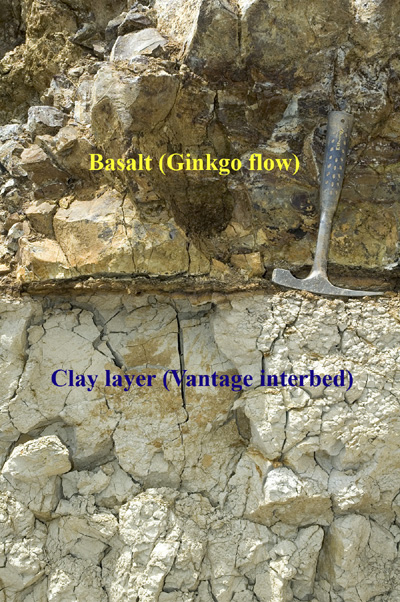Basalt / Clay Studies
Methods

To determine the age of the basalt flow, samples were obtained from the basalt within the quarry and from an exposure of a second basalt flow that underlies the clay layer. Geochemical analysis of the samples was performed at Washington State University using an XRF spectrometer to determine the bulk mineral content of the basalt. Results of these analyses were assessed using methods developed by Beeson, Reidel and Hooper (Beeson, et al. 1985; Hooper, 2000) to establish a stratigraphic context for the deposit.
Samples were also taken from the clay layer and the interface layer between the clay and basalt. These were analyzed using X-ray diffraction and Malvern laser diffraction particle size analysis to determine the mineralogy and depositional history of the interbed.
Results and Discussion
XRF results for the basalt samples indicate that the basalt flow underlying the clay layer is stratigraphically located in the Sentinel Bluffs member of the Grande Ronde Basalt formation, and the basalt flow that preserves the wood is located in the Ginkgo flow, Frenchman Springs member of the Wanapum Basalt formation (Tolan, personal communication), with an approximate age of 15.4 million years (Reidel, et al, 1989). These flows are separated by the Vantage interbed – a clay layer that underlies the wood-bearing basalt. The clay layer is composed of particles of 6-angstrom clay and scattered angular grains of quartz in the 100-200 micron size range. The clay mineralogy suggests that it originated from weathering of existing basalt flows, and the clay appears to have been deposited in a low energy water environment (Mustoe, personal communication). Samples of the clay have been processed in an attempt to extract diatoms and tree pollen in order to further understand the regional climate, but so far these attempts have been unsuccessful.
